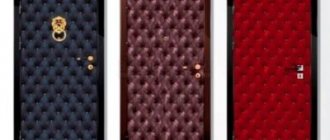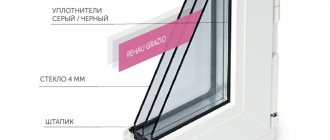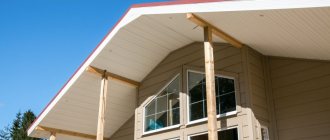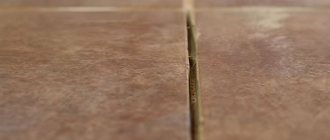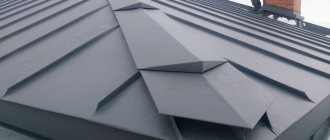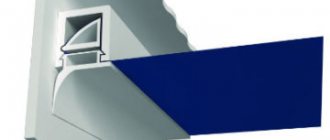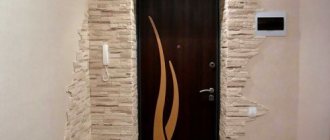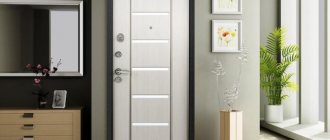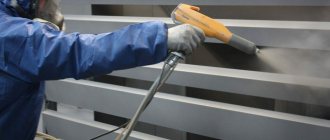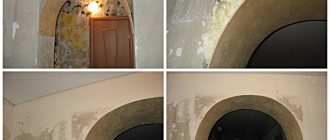Metal doors with MDF panels look very solid and have high levels of heat and sound insulation. A variety of color and milling options allows you to have a unique design and choose a coating that matches the renovation in the hallway, as well as the general facade of the building, in the case of a private house. But due to moisture, sun or mechanical damage, the lining can lose its attractive appearance and even contribute to the deterioration of the metal if water begins to penetrate between the wooden element and the steel sheet. You can replace the MDF panel on the front door with your own hands, for which you will need a screwdriver with crowns and bits, which will do all the work.
Types of MDF overlays
Special slabs are divided into types:
- Painted. The surface is pressed using industrial presses, which sets the shape. Then a paint coating is applied to achieve the required texture and color.
- Laminated. Processing involves the use of a varnish coating, which sets the tone for the overall design. Often panels have one or more layers of lamination.
- Veneered. The veneer finish complements the structural element, providing the elegance associated with natural, natural wood.
- Combined. This option applies multiple treatments in a single product.
Overlays are sorted by class. This affects the cost of the final product. The luxury product is based on the fourth option, which provides the required functional and aesthetic characteristics. Ask the seller questions about the slabs you are purchasing.
Replacing vinyl leather
Today, vinyl artificial leather is the most popular upholstery material. Retail outlets offer a wide variety of colors and textures of this material. It is easily attached using nails with a decorative head. There are a lot of variations in mounting methods. You can simply stretch the vinyl leather over the door leaf and nail it around the perimeter, or stagger the nails and connect them with wire or twine.
The sequence of actions can be seen in the video:
- We clear the doorway. Remove the steel sheet from the hinges. We dismantle the old upholstery material, insulation and fittings - handle, peephole and locks. We lay the canvas on the stools;
- We take measurements. Using a tape measure, measure the height and width of the canvas. We draw a template on the new material. When cutting out the workpiece, we make an allowance of at least 10 mm wide. This stock will serve as a roller to close the gaps of the vestibules;
Pros and cons of MDF overlays
Innovative, non-standard technologies supply manufacturers with unique materials that give doors a “second life” - natural wood, plastic and MDF panels.
The advantages of the latter are:
- High resistance to physical damage. The plates can withstand strong impacts and cuts. In production, a high-pressure press is used, which changes the structure of wood fiber to give greater density. To increase resistance to water and other liquids, a thick layer of laminating film is used.
- A good level of thermal insulation and sound insulation is ensured by the density, which is achieved by pressing several layers of wood materials.
- Installing an MDF panel on a metal door will extend the service life of the structure by several years . The costs will be minimal.
- The aesthetic properties are in no way inferior to the new one. The design takes on an image that is comparable to a carved massif.
The advantages are complemented by ordering products comprehensively through an electronic catalog. There are disadvantages that often manifest themselves in a number of ways:
- Purchasing goods outside of specialized stores involves the risk of receiving a low-quality product. This means that the paint coating will not be enough to repel moisture, and the mechanical resistance is at a minimum.
- If the design is noticeably outdated, you still need to think about completely replacing the doorway. This guarantees a better result compared to adjusting single elements.
- Additional costs that arise due to lack of skills. Sometimes renovations lead to an unexpected result that is aesthetically far from the intended presentation.
After weighing the pros and cons, find the optimal point. This will become the basis for correct and thoughtful financial investments.
Preparing for work
Replacing the old upholstery will not only affect the aesthetics of the doorway, but will also improve the insulating qualities. The quality of the upholstery determines the presence of drafts and foreign odors in the house. Replacement will not be a difficult task if you have a home craftsman's tool and the necessary materials at hand. Buy the required amount of upholstery fabric, insulation (foam rubber or mineral wool) and decorative nails. You will also need a small hammer. Now you are ready to restore the outdated door structure with your own hands.
Materials and tools required for replacing and installing MDF panels
It is not difficult to carry out work on metal doors. You need to select the necessary tools for the job. Overlays can be purchased at a hardware store. But the latter will not be distinguished by sophistication or beauty. Therefore, it is recommended to buy finishing in special stores that guarantee delivery of designer MDF boards.
Important! Before you start searching for the required product, think over the image and compare it with the general character of the house or apartment. The upholstery can be changed from the outside and inside, which also requires careful consideration.
Interesting! For restoration, varnishes, paints, and mastics are often used, which ensures the filling of cracks or irregularities.
The basic tools for replacing an old door panel on a metal door are a hammer, a screwdriver, and a screwdriver. In addition to this, consumables: self-tapping screws, drills, screws. The quantity of consumables will be determined by specialists from the retail outlet where the canvas was purchased.
Creating a new canvas will require replacing the fittings. It is better to pick up the latter in the store where you bought the slabs. The update involves thickening the canvas, which makes it impossible to install old handles, locks, and other structural elements.
How to cover a door with panels or laminate
Covering a metal door at the entrance to an apartment with laminate is similar to installing MDF panels. The door can be removed, the fittings can be unfastened, building insulation can be laid into the base, a starter profile can be installed and the sheathed side can be covered with laminate. Here you will need a complete set of tools. Insulation or soundproofing material can be attached to liquid nails.
Laminate allows you to achieve the perfect color combination with the floor or with other doors. You can choose panels with a pattern. Designers love this kind of cladding. Working with laminate is easy. It does not require additional maintenance, is moisture resistant, resistant to scratches and fading, which allows you to increase the service life of the door for many decades.
Installation and replacement of MDF panels on doors
Before installation, it is necessary to think through the details and focus on the main points regarding the correctness of the task.
If you are not confident in your skills, we recommend using the services of professionals.
Installation and replacement of MDF panels is carried out in stages:
- The old metal structure is removed from its hinges. Sometimes such actions are not feasible, so the installation of MDF panels on entrance doors will have to be carried out vertically using additional equipment. The canvas will need to be cleaned by wet processing. Do not allow dust and dirt to settle. The surface is degreased - this will guarantee a tight fit of the linings to the main structure.
- The slabs should be fastened with self-tapping screws into holes pre-drilled around the perimeter. The spread between fasteners should be 10-12 centimeters. The screwing of the caps depends on the generality of the design; if necessary, you can always hide the “fungi” inside the canvas. To improve the fit, an adhesive composition is used.
- The restoration process involves correcting the main defects that spoil the external image. The beginning is taken indoors, where cracks are sealed and chips are processed. If the caps are twisted from the inside, then the owner or installer will be able to hide them.
Specifics of finishing
The specific operating technology is determined by several factors:
- a wooden or steel door is made;
- features of the material chosen for cladding;
- the need for additional insulation of the sash.
But basically all the methods are similar and are performed according to a single algorithm.
- Dismantling the old cladding (if any).
- Visual inspection, identification of defects and their elimination. For example, it is better to replace the insert in a paneled door with a cheap sample made of thin plywood than to leave a damaged one in place, hoping that it will be hidden by the cladding. It won’t be visible, but what about heat loss through such an opening?
- Before covering a wooden door, it is treated with special preparations (fire retardants, antiseptics). To increase durability, depending on local conditions, the canvas may need to be treated with primer, or even applied with cheap water-repellent paint.
- Determining the layout of the facing material (slabs, sheets) and measuring the linear parameters of the sash. Based on these data, samples are cut into separate fragments. The same applies to insulation (isolon, foam rubber, thin polystyrene foam, etc.).
- Attaching the thermal insulation layer. When applied to a wooden door, one of the practiced schemes involves arranging rollers around the perimeter of the door leaf. How expedient this is is up to the master to decide, since there are other methods for leveling the gaps between the sash and the frame. For example, gluing fiberboard strips to the end of the canvas, reinstalling hinges, installing decorative corners, and so on. Given the variety of choice of cladding materials, the option with rollers is outdated. In addition, it is in these areas of the door that the wear of the trim is most intense.
- Fastening of facing material. Regardless of whether this is done with glue or staples, nails, the work begins with the top part. After fixing the leaf along the width of the door, its orientation is checked, the absence of displacements and distortions along the entire length of the leaf. Next is stretching it and securing it on the sides. The bottom comes last.
- For a metal entrance door, you should choose trim that is fixed by gluing. It is not advisable to drill steel, since in the future the idea may come to change the external design of the canvas. And empty holes in it are ways for cold to penetrate.
- Do not forget about the maintainability of the cladding. This applies not only to its material, but also to its insulation. For example, if it is mineral wool, then it will need to be replaced regularly. The reason is that this insulator accumulates moisture. In addition, it gradually sags, which is reflected in the level of heat loss.
It turns out that door trim is one of the best options for its reconstruction, which can be combined with insulation of the opening. In addition, any of the practiced techniques is completely doable independently, without outside help. And if the canvas has become dilapidated, do not rush to buy a new one - putting it in order, giving it a different look is not at all difficult, and it will cost much less.
Source: bestdoor.guru
In what cases is door upholstery necessary?
The entrance structure may lose its well-groomed appearance for the following reasons:
Long service life. Presence of pets. It is necessary to increase the heat and sound insulation of the room. Old upholstery looks shabby and not aesthetically pleasing. The lock was inserted independently. Major renovation and change of housing design.
If you need door upholstery inexpensively in Moscow, promptly and with a guarantee, experienced specialists will come to your aid.
MDF panels for the front door come in various textures and have many colors.
The linings have high strength and durability.
The material can withstand heavy loads, temperature changes, and does not fade in the sun.
The material is environmentally friendly and does not harm human health.
The pads do not absorb odors.
The facing coating is easy to care for: you need to wipe it occasionally with a damp cloth.
Our specialists will install the panel in 1 day, remove the garbage and leave only positive emotions.
Choosing material
The range of finishing materials for doors is large and they all have their pros and cons. In order not to get confused and choose the right one, we suggest that you familiarize yourself with the brief characteristics of the most popular ones.
Vinyl leather
This material is one of the varieties of artificial leather. It is a film applied on top of some fibrous web. The basis for vinyl artificial leather can be paper, knitwear or other fabric, which is usually impregnated with special polymer compounds to increase strength.
The material can have different colors and textures; moreover, it has an affordable price and is practical to use. Therefore, vinyl leather cladding is a good substitute for natural, very expensive material.
Lining
Lining is slats made of wood, MDF or plastic, equipped with special grooves that make it easy to assemble them into a single sheet. It is suitable for finishing both wooden and metal structures, but installing it on the latter is much more difficult.
For the outer part of the door, it is preferable to use a material that is resistant to external influences, for example, larch. A more budget-friendly option is plastic, which also withstands moisture and is not susceptible to corrosion and rotting. But you need to take into account that such panels can fade in the sun, so covering doors with plastic clapboard will be unprofitable if they are often exposed to direct sunlight.
Lining made of wooden slats
Faux leather
Leatherette is an artificial material that replicates the structure of natural leather. In addition to its attractive appearance, it has other advantages:
- strength;
- efficiency;
- easy care.
The disadvantage is sensitivity to temperature changes and high humidity, which leads to cracking and thereby shortens the service life of the coating.
Leatherette
The name of this material comes from the Greek word “derma”, which means skin. In construction terminology, leatherette is usually called imitation leather. Surely many have heard about him. But why is this material so popular?
The prevalence of leatherette for various finishing works is explained by its positive qualities, such as:
- Affordable price. Although you need to understand, Leatherette is a popular material for cladding
that too cheap material will most likely not be of high quality, so it is better to choose trusted manufacturers, even if the cost of their products is slightly higher.
- Presentable appearance and variety of shades.
- High strength and wear resistance.
- Soundproofing properties.
- Preservation of heat in the house.
- Easy care (the material is easy to clean and is not afraid of moisture).
- durability of the material;
- good sound insulation;
- additional protection against heat leakage.
Leatherette is also easy to process and install, which allows you to carry out work even without special skills. An additional advantage of this coating is vapor permeability, which means that the door under the skin will be able to “breathe”, which means that the wood underneath will not become damp and moldy.
Genuine Leather
A door upholstered in genuine leather looks luxurious and emphasizes the wealth of the owners, which is valued in some circles of society. The following also speaks in favor of leather covering:
Leather is the epitome of luxury
What to choose – finishing options?
A door that has been installed for a long time can be updated, making it stylish and impressive. Upholstery of metal doors with modern high-quality materials is in demand both in the private sector and in apartment buildings. After a comprehensive inspection, the specialist will offer the following upholstery options:
Upholstering wooden doors with leatherette is a great inexpensive way to give your door new life. Upholstery of a metal entrance door with MDF panels - a popular material stylized as natural wood, looks luxurious and rich. Upholstery of metal doors and wooden products with thermal film, which is not afraid of temperature changes and precipitation.
If necessary, you can update the lock, replace the fittings, or, with the help of the company’s craftsmen, repair the front door.
Underwater rocks
- When stretching the material, you need to carefully ensure that it is fixed correctly, without wrinkles or folds. If you have no experience in this kind of work, you can spoil the material or carry out this stage poorly.
- There is no need to insulate with popular materials (paper, felt). They do not retain heat well and encourage pests.
- The cutouts for the peephole and lock should be smaller than the fittings.
- When working with the upholstery of a metal product, it is important to ensure that the material of the inner and outer upholstery does not overlap at the gluing points. Otherwise, the fasteners will be of poor quality.
- It is better not to use rubber gaskets to seal joints; this will prevent the door from closing properly.
Upholstering the front door is much cheaper and easier than replacing it, and the alternative in the form of installing decorative panels from MFD is not cheap (about 3,500 without a specialist visiting for measurements). Another advantage of this design is insulation and positive changes in the interior.
Do-it-yourself door upholstery will save money and be confident in the quality of the work performed.
Source: misterdver.ru
Why upholster the door structure in an apartment - metal or wood?
Entrance door upholstery is necessary for any door leaf material . This not only gives a complete look to the exterior design of the room and living room, but also plays an important role in maintaining comfort.
The advantages of this solution, regardless of the quality of the upholstery material, are the following:
- the level of sound insulation increases and resistance to moisture improves;
- the aesthetic appearance improves and various types of defects become less noticeable;
- the room is kept warm;
- the steel leaf protects the door leaf well from corrosion (if the door is wooden, then temperature changes with proper upholstery will not be a problem for it).
The upholstery itself is very sensitive to sudden temperature changes and is unsuitable for restoration after the slightest damage (mechanical and corrosion).
Panel selection
If the door structure has lost its presentable appearance, then you should not immediately change the entire door. It can be improved by replacing several external parts. The MDF panel creates the decor of the structure and if it is replaced, the canvas will look like new. The main thing in this matter is not to worsen the overall characteristics of the door. There are many situations when a panel needs to be replaced. The reason for this may be not only the deformation of the canvas, but also the owner’s desire to change the design of the structure.
To ensure that this event does not cause problems, you need to clearly work out the algorithm of actions. The first thing is to take accurate measurements of the old outer slab and then go to the store to buy a new product. Height, width and thickness are measured. It is also worth considering other selection criteria and nuances of the panel:
- If you purchase a thinner canvas, it will not fulfill its purpose, and if it is too thick, it will ruin the appearance. Installation will also be difficult;
- It is also important to choose the right size. If the MDF board is too large, it will need to be cut, which is additional work and expense;
- You should pay attention to the quality of the manufacturing material;
- MDF board is pressed wood chips. When purchasing, you should pay attention to the density and roughness of the panel;
- Some models are sold immediately with a decorated surface. If you choose the right color scheme, then after the installation process you will not need to carry out cosmetic measures.
The most difficult thing is “adjusting” the lining to the door. That is why craftsmen advise purchasing a slab of suitable sizes and with machined edges. The last feature of the product will prevent the material from shedding. If MDF is well processed, it means that it will not absorb moisture and will last for many years.
If the door faces the sunny side, then it is worth purchasing a sheet with a special protective treatment against ultraviolet radiation. This will preserve the appearance of the panel.
Materials for sheathing or replacing old ones during repairs
In order to sheathe a new iron or wooden door or change the upholstery of an old one, use the following materials.
Lining and MDF panels
The door leaf will look more elegant if it is covered with clapboard . The wood structure always captivates the eye and makes the interior more lively and comfortable. Lining can be made by emphasizing it with paints and varnishes and polyurethane moldings. The sophistication will be more harmonious due to the upholstery made from a series of beads and rivets.
MDF panels are easy to process. There are three types of MDF:
- Painted . They are used only for interior decoration and perfectly improve the resistance of MDF to damage and moisture. For these purposes, they are impregnated with special coatings of various compositions.
- Veneered . The durable option is used for external and internal work. The material is impregnated with oak, ash, birch and rare wood species from valuable specimens.
- Laminated . These models are covered on top with a durable PVC film. Various materials are imitated. Suitable for indoor and outdoor use. It has a reasonable price and excellent quality.
You can trim the front door with plastic clapboard. This option will not greatly improve the appearance of the door and will not transform the room, but it is an inexpensive, durable and quite practical option for work in office and warehouse premises.
Plywood
Plywood is similar to wood grains . This is a kind of imitation of trees. the material is treated with special compounds that have increased strength and perfectly prevent the ingress and impact of moisture. Temperature changes are practically not dangerous for such a coating.
Aviation plywood must have the following qualities:
- breathe polished on both sides;
- made of peeled birch veneer and well glued.
The only disadvantage when using plywood is that the outer surfaces are almost always covered with a film of bakelite resin. this usually complicates ongoing work. Therefore, if it is necessary to stick stickers on the surface of decorative elements, the places where the glue is applied should be well sanded.
Laminate
Glued-pressed boards made from wood fibers are not intended for increased loads. The surface can be easily and without difficulty cleaned of dirt . It withstands damage well and is not afraid of impacts and scratches. If you choose the right tongue-and-groove panels, they will create the illusion of a monolithic coating.
Laminate is used only for exterior work. That is, it is possible to cover only the outside of the door with such material.
Laminate is not suitable for interior work, as it has poor characteristics for:
- resistance to high moisture;
- temperature changes;
- mechanical influences.
Dermantin
Dermantin is a decorative constriction of cotton fabric that contains a layer of nitrocellulose. This material should be used for interior work in :
Instructions for finishing the front door from the inside
Finishing the entrance door opening from the inside begins immediately after installing the door block. First, the slopes are finished with plasterboard or MDF boards and the trim is installed. Then the threshold is set. Upon completion of the above work, they begin finishing the doors. Below are instructions on how to properly paint, upholster and trim doors.
Door painting
The simplest and cheapest solution for finishing doors is painting them.
Tools and materials
To carry out door painting work you will need:
- dye;
- Screwdriver Set;
- cuvette;
- paint roller (you can paint with a brush, which takes longer, but then a ditch is not needed);
- old newspapers or a piece of plastic film.
Painting instructions
Painting doors begins with removing the handle, locks and peephole - if this is not done, you will have to fiddle around for a long time to remove the paint from them. Covering the fittings with masking tape helps, but traces of paint still remain, albeit barely noticeable. Therefore, it is better to remove everything unnecessary.
Then newspapers or film are spread under the door to protect the floor from paint drips.
The surface of the door is washed, degreased, and then treated with sandpaper. This procedure is carried out with both wooden and metal doors. After the door leaf has completely dried, paint is applied in 2-3 layers. The process ends with installing the fittings in place.
Dermantine upholstery
The process of door upholstery, with instructions and several technologies, is described in detail in the article posted on our website “Do-it-yourself door upholstery with dermantine.”
Door trim
For door trim, each type of finishing material uses its own technologies. Here we will look at how to decorate the inside of the front door with your own hands using solid overlays made of natural wood, composite plastic, MDF panels, laminated chipboards, and plywood.
Tools and materials
To trim the doors you will need:
- overlay made of natural wood, MDF, chipboard or plywood;
- screwdriver with a set of bits (cross No. 7 and slotted) and drills for metal (diameter 2.8 mm, 3 mm and 10 mm);
- primer for metal;
- roulette;
- hammer;
- clamps;
- paint brush;
- acetone or white spirit;
- insulation if it is planned to carry out heat and sound insulation;
- self-tapping screws;
- sandpaper P120-P150;
- glue;
- plastic plugs.
Instructions for attaching solid door trims
The plates are attached to the surface of the doors in two ways:
- on the frame - when insulating the door leaf from the inside;
- with self-tapping screws or glue without insulation (the method is used mainly for exterior finishing).
Regardless of the method of fastening and the type of material chosen, the door leaf is prepared for installation of decorative finishing:
- handles, locks, and peepholes are removed;
- the metal is cleaned with sandpaper;
- degreased with acetone or white spirit;
- primed with primer.
The wooden door is cleaned, degreased, and then puttied - small cracks are repaired.
The step-by-step algorithm for fastening with self-tapping screws is as follows:
- Markings are made on the overlay for screws: 3 on top and bottom, 5 on the sides. In this case, it is necessary to ensure that the fasteners do not get on the fittings;
- holes are drilled in the plate with a 2.8 mm drill;
- the lining is applied to the door and secured to it with clamps;
- metal is drilled through the finished holes;
- manually, using a drill with a diameter of 10 mm, recesses for the screw heads are drilled into the plate;
- the cover is secured with hardware;
- on the reverse side, through the holes in the door, holes are cut out in the slab for locks, a handle and a peephole. To do this, you can use a large drill (under the peephole); crown or cutter for locks and handle;
- fittings are installed;
- Using a hammer, plastic plugs are driven onto the heads of the self-tapping screws.
When attaching the lining on both sides, you can use the method shown in the photo, where the screws are not visible.
Fastening with self-tapping screws for double-sided finishing with slabs.
Here, first, through holes are drilled through the entire door to attach the internal lining. The plate is attached to the surface with a self-tapping screw. In this case, it is necessary to select the length of the hardware so that it does not come out.
The outer cover will hide the caps of the fastening elements. And it itself will be fastened with self-tapping screws screwed into the vestibule, in which the heads of the hardware will be hidden by a seal.
This option allows you to use insulation that fits under the inner panel.
Instructions for finishing the door outside
The technological process of attaching the cladding from the outside is identical to the work on the inside. The only thing that needs to be taken into account here are completely different requirements for the facing material. It must withstand seasonal temperature fluctuations, be resistant to moisture and sunlight, have increased strength against mechanical stress, and at the same time be beautiful and stylish.
How to properly upholster a door structure for insulation with your own hands?
Surface preparation
Regardless of what material is chosen, the door leaf is prepared according to the standard scheme. All consumables are taken with a small reserve in case of an unforeseen situation and a shortage of centimeters of the required product.
- Before covering the door, remove it from its hinges and place it on a flat surface. It is best to use a sturdy stool for this. It is much more convenient to carry out work on it than, for example, on a table or on the floor. After this, the fittings should be dismantled. The handles, peephole and any locks inserted inside should be removed.
- The freed surface is cleared of debris and, if necessary, washed with cleaning agents. If the slightest defects are detected, they should be eliminated. Defects may include fungus, mold, and rust stains.
- A moisture-proof or antiseptic coating must be applied to the canvas.
Required materials and tools
The standard set of tools are:
- Tape measure and square. Needed for measurements.
- Hacksaw or scissors. with their help, the required amount of product is cut through.
- Simple and decorative nails, self-tapping screws, epoxy glue and liquid nails. This is a list of fastening tools that will be needed at many stages of installation, depending on the complexity of the job.
- Hammer. For fastening upholstery with nails.
- Roller and brush. Needed for coating the canvas with paints and varnishes.
To dismantle the fittings, you need to stock up on a set of screwdrivers and pliers . To accurately complete the upholstery, you need to use a marker or construction pencil when measuring. Using a professional tool you can speed up the process. For example, a construction stapler will help you do this. Instead of a screwdriver, you can use a drill with a special attachment.
Process technology
- First, the end is finished. It needs to be painted to match, and in the case of double-sided upholstery, the part is sealed with a strip of upholstery material so that it goes on both sides: The perimeter of the door is fixed with a special roller. It serves to cover the gaps between the jamb and the door.
- A bundle of insulation is laid in the middle of the upholstery strip and crimped in the middle.
- Strengthen insulation. This is done using liquid nails or a furniture stapler. The insulation can be fixed either directly to the canvas or to a wooden sheathing.
You can change the upholstery of the front door yourself . To do this, you need to select the material itself and prepare a list of necessary tools for the work. By following a certain technique, you can bring your home into a comfortable state by framing it with upholstery.
Source: okcomfort.com
How to choose a panel and its size
Let's start with the dimensions. Everything is simple here - you need to know the dimensions of the door. Look at the product passport or call the manufacturer, he will provide all the necessary parameters. You can also find out the size of decorative MDF overlays from him. It is hardly worth taking independent measurements - there is a risk of making a mistake, then the purchased panel will turn out to be either larger and will have to be cut, or smaller, so a gap will form, which is unacceptable.
There are three types of MDF overlays:
- Laminated - they were the very first to appear on the market and have proven themselves well. They are not afraid of temperature changes, precipitation, and are resistant to mechanical stress.
- Veneer and eco-veneer. An exclusive finish, which, like laminated, can be used for street doors.
- Painted. A good option for street doors. Painting is done with chemically resistant paints that do not fade in the sun, do not crack or peel when exposed to moisture.
What to choose is decided individually. All types of MDF panels can be used outdoors.
finishes metal structures with Italian MDF.
Replacement instructions
First you need to determine how the old trims were installed. It is best to clarify this issue with the manufacturer, and then call a specialist, so as not to engage in amateur activities.
MDF mounting options
The panels are attached in three ways:
- for glue, polyurethane foam or liquid nails to the stiffeners or frame;
- are inserted into the grooves, additionally they are always fastened with end and lock moldings - vertical overlays on the door frame;
- on self-tapping screws.
Before starting work, carefully inspect the metal structure and determine how the MDF linings are secured. Based on this, build subsequent actions.
| Removing the locks and handle | Drilling out the rivets | Removing the side bar | Unscrew the screws |
| We tear off the panel from the silicone | Removing the panel | New MDF panel | Marking places for fittings |
| Using a drill bit to make round holes | Smooth the edges with a burr | Apply silicone | Installing a new panel |
Procedure
For the most part, the panels are inserted into grooves and secured with side strips. Let's look at their replacement order:
- Always start by removing the interior panel. To do this, remove the rubber seals, unscrew the fasteners on the end and lock parts of the door leaf, dismantle the lock and remove the strips.
- Carefully roll out the old panel and replace it with a new one.
- Insert the lock into the lock vertical bar and secure with bolts. Then tighten the remaining screws.
- Repeat with the end strip.
- The outer panel is inserted from the top and to the right into the grooves and is fastened through the moldings with self-tapping screws, so the latter must be greatly loosened so that the trim can be removed.
- You also need to remove the locking armor plate.
- In the new panel, cut exactly the same holes as were on the old one.
- Place it in the grooves.
- Replace the moldings and secure them.
- Apply rubber seals.
- Install armor plates on the locks.
- Replace the handle.
- Check how the locks and handle function.
To ensure that the outer panel fits well into the side and bottom grooves, use a hammer on the opposite side, placing a thin wooden plank under it.
We produce MDF entrance doors to individual sizes. To place an order, call or leave your contact information in the feedback form. We'll call you back and help you make your choice.
DOOR TRIM
| Service | *Price |
| Door trim MATERIAL VINYL | from 3500 rub. |
| Door trim MATERIAL MDF | from 5500 rub |
| Door trim CUSTOMER'S MATERIAL | from 3000 rub |
| CONSULTATION | 500 rub |
| FALSE CALL | 1000 rub |
Differences between dermantine and vinyl leather
The basis for dermantin is cotton fabric, which is then covered with nitrocellulose on one or both sides. This type of finish is considered the cheapest, so since Soviet times it has been in great demand. Not only entrance doors are sheathed with nitro leather, but also books, furniture, and cheap shoes and clothing are made.
Significant disadvantages of dermantine are its low decorative properties and its rapid deterioration - the material wears off, dries out and crumbles in a fairly short time. In addition, the nitrocellulose coating has an average level of elasticity, which is not very convenient to use.
Trying to increase the elastic properties of the finishing material, manufacturers began to use knitwear and easily stretchable non-woven materials as a base. Changes have also been made to the coating - now more stable polymer solutions are applied, for example, polyvinyl chloride and polyacetate. The resulting material was called vinyl leather.
Modern technologies, by impregnating the material in several liquid polymer compositions, have made it possible to make vinyl leather more dense and resistant to:
High-tech equipment rolls the resulting substitute, giving it a variety of textures, shades and patterns. Vinyl leather has a pleasant-to-touch surface that is easy to clean.
The downside is that the vinyl is more likely to be easily cut or scratched. Such damage cannot be completely eliminated - the gluing or patch will clearly stand out against the general background. A complete upholstery replacement will be required. Also, this leather substitute under prolonged exposure to sunlight becomes rough, cracks and loses color. Therefore, it is not recommended for finishing the outside of the front door.
